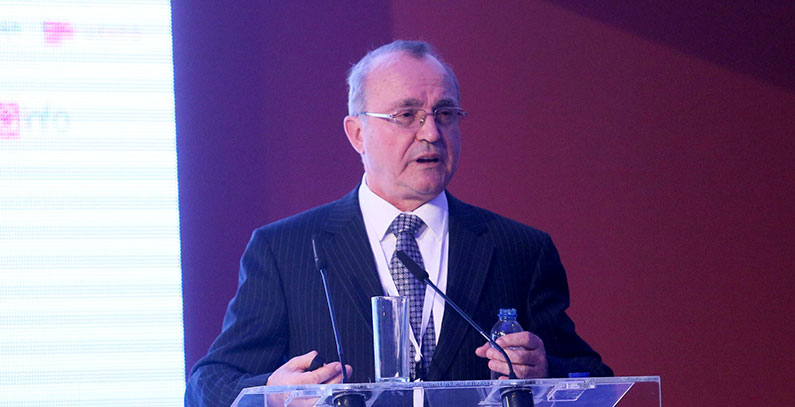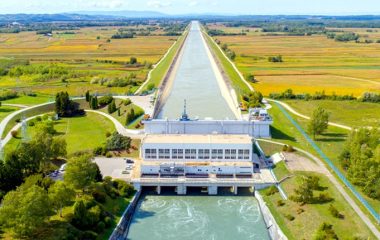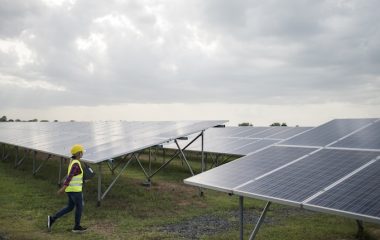
Photo: BGEN
Author: Nikola Rajaković, a professor at the University of Belgrade School of Electrical Engineering (ETF)
It seems that during the last couple of months the speed of change has been the main characteristic of energy transition. This is particularly true for the price drop of renewable energy technologies. It could be easily determined that the price of one megawatt-hour (MWh) of electrical energy from solar is considerably cheaper than one megawatt-hour produced in a thermal power plant.
For Serbia also it could be argued that today the levelized cost of electricity or LCOE from solar or wind power plants is lower than LCOE from thermal power plants. On the other side, we have to say this loudly and clearly: it is possible to manage a system which is 100 percent powered by renewable energy.
Lignite used to be treasure, today is a burden
It is a fact that the fossil fuel era is coming to its end and that our region, with a substantial reserves of lignite, has to gradually shift to decarbonization.
In the past, lignite was considered to be treasure and a provider of energy independence. Yet, today the lignite is without doubt considered to be a burden, which has to be overcome along the energy transition process. In the decades to come the energy system has to be fully decarbonised, i.e. there has to be a switch to renewable energy sources (solar, wind, hydro etc.) which is to secure and increase energy independence at the same time.
When we think about future generations, we have to do it in a responsible way, since, from technological perspective, they will undoubtedly use lignite in more efficient way. As a generation we are not chosen to consume all the lignite in this inefficient way, as we are consuming it nowadays.
Amazing price drop of renewable energy technologies
It seems that during the last couple of months the speed of change has been the main characteristic of energy transition. This is particularly true for the price drop of renewable energy technologies.
If we take into consideration the levelized cost of electricity or LCOE during the power plant’s lifespan, as a generally accepted quantitative measure, then we can note that the prices of electricity at some of the recently held auctions for solar stood as low as EUR 22/MWh, which is unbelievably low price.
It is easy to conclude that nowadays the price of one MWh of electricity from solar (the only exception relates to plants close to poles) is much lower than the price of one MWh produced in thermal power plant. It is important to point out that hybrid solutions (a combination of a solar power plant and powerful batteries at the same location as one balancing group) are very competitive nowadays due to quick drop of batteries’ prices. Very similar conclusions can be reached if we analyse wind farm projects.
Therefore, for Serbia also it could be argued that today the levelized cost of electricity or LCOE from solar or wind power plants is lower than LCOE from thermal power plants. This implies that somewhat higher price of capital in Serbia compared to developed countries is considered, as well as increased risk of regional energy market. Taxes on CO2 emissions are calculated for thermal power plants and public health costs.
It is important to know that with current level of prices in Europe, CO2 taxes would devour one third of income from thermal power plants thus making them economically unsustainable. Yet, this is not the key parameter when analysing the (un)sustainability of new coal projects. The impact on ecosystem should come first, i.e. negative impact on citizens’ health.
With more available information on the negative impact of lignite power plants on human health, they shouldn’t be put in operations. It is unacceptably expensive, and from technological point of view problematic, to deliver a thermal power plant with CO2 storage in place and with other negative effects, such as nitrogen and sulphur oxides, already eliminated.
It is possible to manage system fully powered by renewables
Expert community claims that today it is possible to manage a system that is fully powered by renewables, i.e. decarbonized one.
This is supported by the latest researches that demonstrate that the power system with the following energy mix can be successfully managed: 60 percent is powered by solar, 20 percent from hydro and 20 percent from wind power plants, provided that the consumption is mostly electrified (transportation, heating and industry) and that electric power system is connected with heating and transportation systems in a such way that energy is stored in different forms thanks to smart infrastructure which also manages cross-sectoral coupling.
That kind of system is fossil fuel free and fully decarbonized!
Below are listed some data to provide further support to faster decarbonization:
- During 2019 in EU 1,029 TWh of electricity was generated by renewables (the biggest portion by hydropower facilities), 941 TWh was generated by thermal power plants and 777 TWh by nuclear power plants.
- The biggest solar power cluster of 2GW capacity in India occupies 53 square kilometers. The plan says that India with 450 GW of capacities from solar becomes one of global leaders in solar energy.
- The solar potential of Trebinje city in Bosnia and Herzegovina can provide maximum solar output during 1,500 hours annually. South Bavaria in Germany achieves great results in solar with 1,000 hours!




















Be the first one to comment on this article.